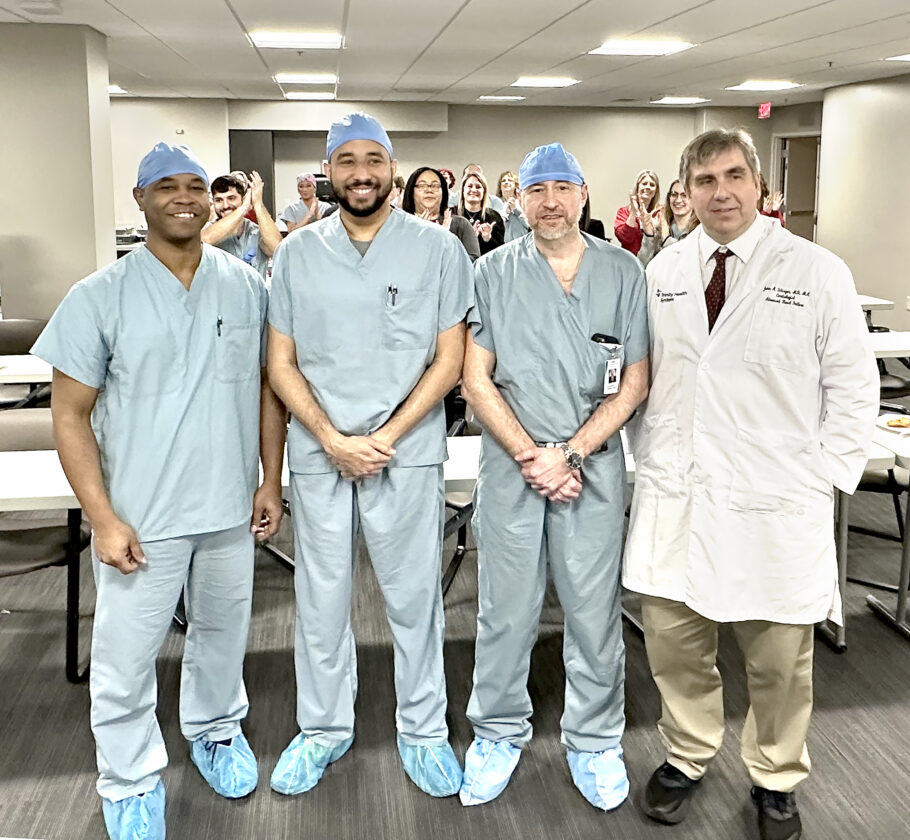Our thanks to Linda Harris of The Herald-Star for her excellent coverage of our Structural Heart Team’s 100th TAVR procedure last week. Click the link below to read the article in its entirety.
STEUBENVILLE — Trinity Health System’s Structural Heart Team passed a significant milestone Tuesday, performing its 100th transcatheter aortic valve replacement.
Surgeons use a hollow catheter to place a new valve mounted on a balloon into the patient’s heart. When it’s in position, the balloon inflates and the new valve starts working.
TAVR patients “are typically up and walking in six hours and most go home the next day,” said Dr. Triston Smith, director of the structural heart program and interventional cardiologist.
Smith and Drs. Gregory Suero and Victor Maevsky started TAVRs at Trinity about 18 months ago, though they’d done them before in Wheeling.
“The advantage of doing it is you don’t need general anesthesia, we don’t need to open the patient’s chest,” Smith said. “It’s very minimally invasive.”
The procedure was first developed about 20 years ago in France, “then it slowly gained traction,” he said. Doctors in the U.S. got the go-ahead to perform TAVRs around 2014.
“We’ve seen a very fast uptick in use because the technology is so good and patients do so well with it,” Smith said. “Initially, it was just approved for patients at prohibitive risk for surgery. Now it’s approved for anyone, as long as we have a heart team discussion of the pros and cons of traditional heart surgery vs TAVR, and then communicate that information to the patient.”
For the entire article, click here.

